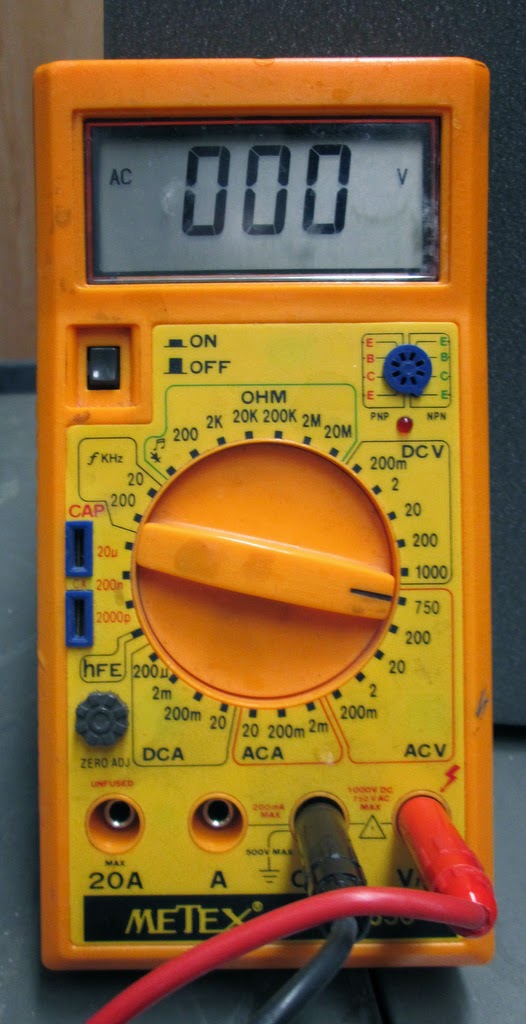Summary
Prep work for magnet power supply testing was done today. A three phase switch box was wired along with an extension cord to reach from the switch box to the power supply. The input side of the water chilling system was constructed complete with a flow meter. Only the output side setup remains.
Prep work for magnet power supply testing was done today. A three phase switch box was wired along with an extension cord to reach from the switch box to the power supply. The input side of the water chilling system was constructed complete with a flow meter. Only the output side setup remains.
Background
Hirsch's theory of hole superconductivity proposes a new
BCS-compatible model of Cooper pair formation when superconducting materials
phase transition from their normal to their superconducting state[1]. One
of the experimentally verifiable predictions of his theory is that when a
superconductor rapidly transitions, (quenches), back to its normal state, it
will emit x-rays, (colloquially referred to here as H-rays because it's
Hirsch's theory).
A superconductor can be rapidly transitioned back to its normal state by placing it in a strong magnetic field. The experiment being performed proposes to look for H-rays emitted by a Pb superconductor when it is quenched by a strong magnetic field.
The lab book entries in this series detail the preparation and execution of this experiment.
A superconductor can be rapidly transitioned back to its normal state by placing it in a strong magnetic field. The experiment being performed proposes to look for H-rays emitted by a Pb superconductor when it is quenched by a strong magnetic field.
The lab book entries in this series detail the preparation and execution of this experiment.
Call for Input
If you have any ideas, questions, or comments, they're very
welcome!
Checking wire for use
with magnet supply
The specs for the wire
are as follows:
Product
Features
|
||
AWG Size:
|
14
|
|
Allowable Ampacity:
|
15
|
|
Amp or Amperage:
|
15
|
|
Cable Type:
|
Power
|
|
Color:
|
Black
|
|
Color Code Chart:
|
106
|
|
Conductor:
|
Fully
Annealed Stranded Bare Copper
|
|
Conductor Stranding:
|
41/30
|
|
Construction:
|
Conductor
|
|
Fitting Type:
|
TB2534K
|
|
Insulation:
|
EPDM
|
|
Jacket:
|
Thermoset
CPE
|
|
Lbs./M:
|
208
|
|
Length:
|
Cut
To Length
|
|
No of Conductors:
|
4
|
|
Nom. Insulation Thickness:
|
.045
Inches
|
|
Nom. O.D.:
|
.575
Inches
|
|
Oil Resistant:
|
Y
|
|
Product Family:
|
Industrial
Cable
|
|
Product Type:
|
Flexible
& Portable Cord
|
|
Ratings:
|
UL/CSA
|
|
RoHS:
|
Y
|
|
Shielding:
|
Non-Shielded
|
|
Solid/Stranded:
|
Stranded
|
|
Sunlight Resistant:
|
Y
|
|
Temp. Rating:
|
-40C
to 90C
|
|
Type:
|
SOOW
|
|
UL:
|
Y
|
|
Voltage:
|
600V
|
|
Water Resistant:
|
Y
|
|
The cable looks like it will just handle the current we want
to run through it.
A heavier type P-122 with both a male and female connector
is being modified to be fit to the wall mounted switch box. The male connector
will be removed and attached to one of the longer E42543 cables.
The female connector will be left in place and the exposed
wires will be attached to the switch box.
The exposed wires on the E42543 cable will be attached to
the magnet power supply on the terminal block shown below
The schematic that indicates L1, L2, and L3 are the proper
choices is shown below
Checked for shorts between the four leads of the cable and
there are none. The green conductor is
attached to the keyed slot of the jack which I’m assuming is the neutral.
I checked the box to make sure all three hot wires were
indeed hot, when energized, which they were:
I then turned the breaker off and made sure there was no
voltage on the box.
The box was wired to the cord including the green neutral
conductor.
Finally, the plug was wired.
Magnet Cooling System
An elbow was placed on the detachable section of the quick-connect for the magnet cooling water so that the water flow meter could be placed in the circuit upright.
An elbow was placed on the detachable section of the quick-connect for the magnet cooling water so that the water flow meter could be placed in the circuit upright.
References
1. Hirsch, J. E., “Pair
production and ionizing radiation from superconductors”, http://arxiv.org/abs/cond-mat/0508529










Comments
Post a Comment
Please leave your comments on this topic: